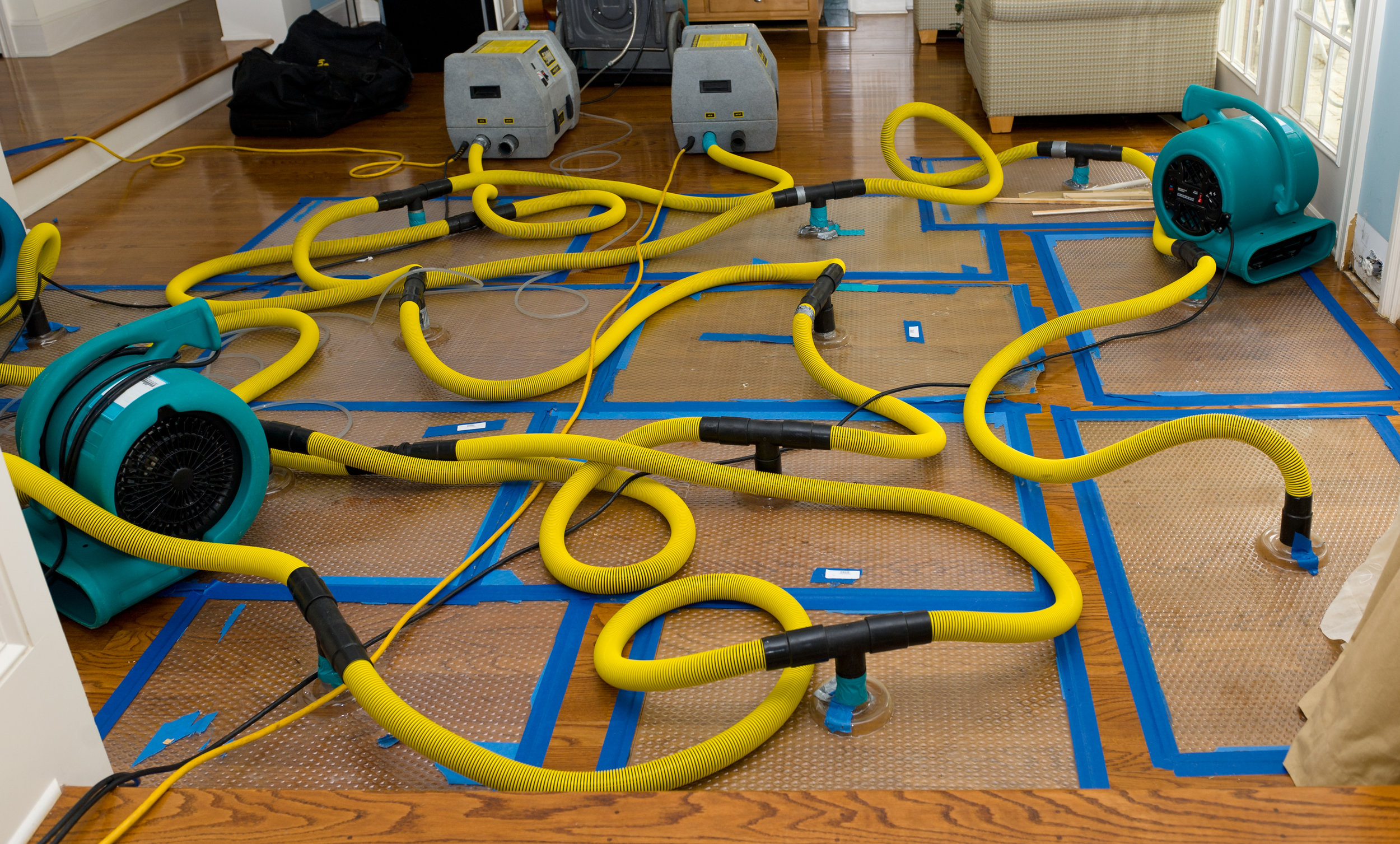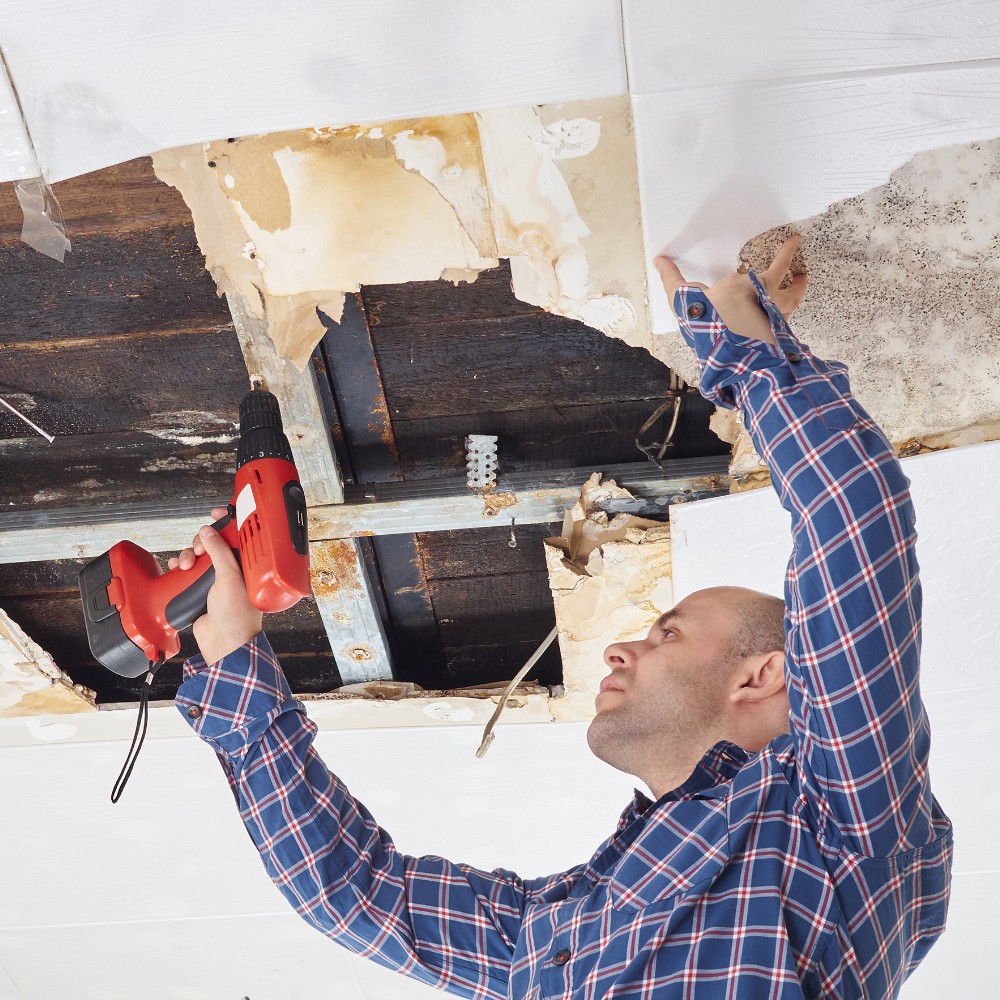Important Actions to Follow for Reliable Water Damage Repair in your house
When confronted with water damage in your home, recognizing the important actions for efficient reconstruction can make all the distinction. You need to examine the damage and guarantee safety and security prior to dealing with the issue. Quiting the source of water is vital, however it's just the beginning. Once you have actually handled that, there's a series of activities you must require to protect your home from additional concerns. Let's discover what you must do following.
Evaluate the Damages
When you uncover water damages in your home, the first action is to evaluate the damages completely. Begin by determining the source of the water invasion. Look for leaks, ruptured pipes, or other concerns creating the problem. Next, take a look at the affected locations for noticeable indications of damages, consisting of staining, bending, or mold and mildew development. Do not fail to remember to look in hidden places like behind walls or under floor covering, as water can leak into these areas unnoticed.Document the damages by taking clear images and notes. When reviewing the situation with your insurance coverage provider or repair experts, this will aid you. Take note of the type of materials affected, as various products require different restoration methods. Evaluate the level of the damages. Is it comprehensive or small? Comprehending the scope will assist you in choosing whether to handle it yourself or employ the experts for a more substantial reconstruction process.

Ensure Safety
Before you start any reconstruction job, assuring your safety is essential. Assess the condition of your home. If the water's deep or if you notice electrical hazards, do not get in the location. Turn off the electrical energy and gas supply to avoid accidents. Put on protective equipment like boots, masks, and gloves to protect yourself from contaminants or mold.It's crucial to stay aware of your environments; watch for sharp items and unsafe surfaces. If the water is from a sewage back-up, treat it as harmful waste. Keep children and family pets far from affected locations to avoid exposure.Once you have actually taken these preventative measures, you can wage the remediation procedure. Keep in mind, your security precedes, and if you're ever before not sure, it's finest to get in touch with a professional. Taking these steps will aid assure you prepare to take on the repair safely and properly.
Quit the Source of Water
After ensuring your safety, the next action is to quit the source of water. Identify where the leak is coming from. It might be a ruptured pipeline, a malfunctioning home appliance, or also heavy rain entering via a damaged roof covering. Turn off the primary water supply to your home to avoid more flooding if it's a plumbing issue. For appliances, unplug them and shut down their water valves.If the resource is outside, like rain, attempt to divert it far from your home utilizing sandbags or other obstacles. For small leakages, you might be able to use tape or a sealer briefly until an expert can fix it. Keep in mind, resolving the resource rapidly is vital to minimizing damages and stopping mold growth. Once you've stopped the water, you'll remain in a far better setting to carry on to the next steps in the repair procedure.

Eliminate Excess Water
Act swiftly to eliminate excess water, as standing water can bring about more substantial damage and mold and mildew development. Initially, gather your devices: a wet/dry vacuum cleaner, containers, and towels. You can utilize towels to saturate up the moisture if the water is superficial. For deeper water, a wet/dry vacuum cleaner is your best option. Ensure to empty the vacuum cleaner often to stay clear of overflow.If the water is contaminated, like from a sewer back-up, wear protective gear, including masks and gloves, to maintain on your own secure. As soon as you have actually gotten rid of as much water as feasible, look for surprise pockets of dampness in edges and under furniture, as these can nurture mold.Don' t fail to remember to shut off electrical devices and power outlets in wet locations to avoid threats. This preliminary step is necessary in lessening damages and setting the stage for an effective repair procedure.
Dry and Dehumidify the Area
Once you've removed the excess water, it's important to completely dry and dehumidify the location extensively. Start by making use of dehumidifiers effectively to pull moisture out of the air and avoid mold and mildew growth. Watch on moisture degrees to ensure the room dries out entirely.
Remove Standing Water
To efficiently tackle water damage, you require to focus on removing standing water as promptly as feasible. Beginning by gathering required devices, like a wet/dry vacuum or a pump, depending upon the quantity of water. A vacuum must do the technique if the water is shallow. For bigger amounts, a pump is much more reliable. While working, make certain to put on safety gear to keep yourself safe from contaminants. As you remove the water, focus on concealed locations like under furniture or in corners where water may accumulate. As soon as you have actually removed the majority, your area will start to dry. This step is vital, as remaining water can lead to mold and mildew growth and more considerable damages.
Usage Dehumidifiers Effectively
How can you successfully use dehumidifiers to completely dry and evaporate your area? Start by placing your dehumidifier in one of the most affected area, ideally where water damages is most severe. Ensure to close all doors and windows to create a closed environment. Switch on the dehumidifier and established it to the ideal humidity level, generally around 30-50%. Vacant the water collection storage tank frequently, or consider making use of a model with a constant drain option for benefit. Ideally, use followers to improve air flow, assisting the dehumidifier work much more efficiently. Keep the dehumidifier running till you're certain that the area is extensively dried out, preventing mold development and additional damages (Smoke Damage Restoration). This action is crucial for reliable water damages restoration
Monitor Humidity Degrees
Surveillance humidity levels is necessary throughout the drying procedure, as it helps ensure your space stays without excess moisture. Buy a trustworthy hygrometer to track moisture precisely. Preferably, you intend to preserve degrees in between 30% and 50%. You might need to change your dehumidifiers or followers to improve air flow if moisture readings rise over this array. Check the readings on a regular basis, especially in areas vulnerable to dampness, like basements or restrooms. If you observe persistent high moisture, take into consideration enhancing ventilation or making use of added dehumidifiers. Staying on top of these levels not only quickens the drying procedure but additionally avoids mold growth, ensuring your home keeps comfortable and risk-free.
Tidy and Disinfect Affected Surfaces

Recover and Repair Your Home
After cleaning and disinfecting the affected areas, it's time to recover and fix your home. Begin by reviewing the damage. Look for architectural problems, like damaged floors or wall surfaces, and address any necessary repair work. Changing damaged drywall or floor covering is essential for both aesthetic appeals and safety.If your furniture or items were impacted, think about whether they can be recovered or need substitute. Tidy or properly recover things where possible.Next, touch and paint wall surfaces up any areas that require focus. This not just enhances appearance yet additionally shields surface areas from future water damage.Don' t forget to examine your pipes and devices for leakages, ensuring whatever's working appropriately. Consider installing a dehumidifier to prevent future dampness issues. By taking these steps, you'll restore your home to its former magnificence and develop a more secure living atmosphere.
Often Asked Concerns
How Much Time Does Water Damages Repair Generally Take?
Water damages restoration commonly takes anywhere from a couple of days to numerous weeks, depending upon the level of the damage (Water Damage Cleanup). You'll wish to examine the situation promptly to reduce more difficulties and ensure appropriate reconstruction
Will My Insurance Cover Water Damages Reconstruction Prices?
Your insurance policy could cover water damages repair expenses, however it depends upon your policy. Check your coverage details and contact your insurance coverage agent to clarify what's included and what you need to file a claim.
Can I Deal With Water Damage Remediation Myself?
You can manage water damages reconstruction yourself, but it's important to examine the circumstance first. You could desire to call professionals if it's considerable. Always prioritize security and guarantee you have actually got the right devices.
What Are the Indications of Hidden Water Damages?
You may notice indicators of covert water damages like distorted wall surfaces, mildewy odors, or staining. If your floors really feel spongy or you area mold, it's time to check out further prior to the situation gets worse.
How Can I Stop Future Water Damage in My Home?
To stop future water damages in your home, you need to on a regular basis inspect pipes, seal cracks, preserve gutters, and warranty correct drain. Mounting a sump pump and moisture obstacles can additionally help keep your area completely dry. When you find water damage in your home, the initial step is to analyze the damage completely. Act promptly to remove excess water, as standing water can lead to a lot here more extensive damage and mold and mildew development. To effectively take on water damages, you require to concentrate on getting rid of standing water as quickly as possible. As you eliminate the water, pay interest to hidden areas like under furnishings or in edges where water could accumulate. Water damages restoration generally takes anywhere from a few days to a number of weeks, depending on the degree of the damage.